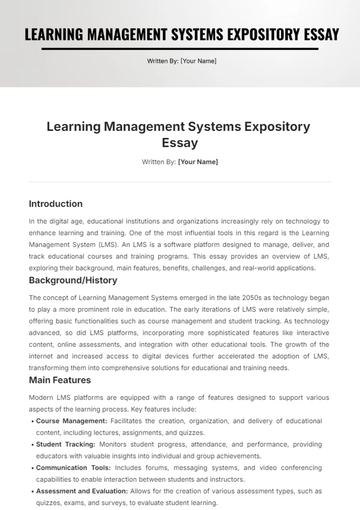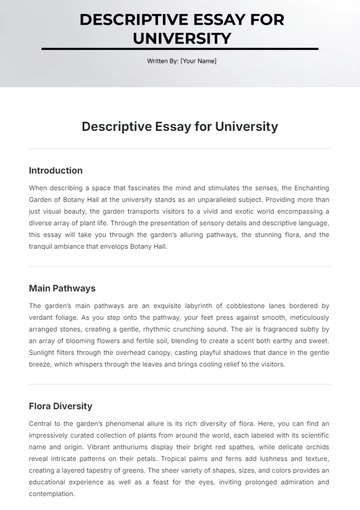Free Urban vs. Rural Descriptive Essay

Written By: [Your Name]
Introduction
The debate between urban and rural living has a long history, and it continues to be a significant topic of discussion today. Urban areas, characterized by their bustling city life, skyscrapers, and dense population, offer a stark contrast to the serene, spacious, and green environment of rural areas. This essay aims to vividly describe and contrast the characteristics, lifestyles, and environments of urban and rural areas to highlight their differences and similarities. By delving into living conditions, social life, and infrastructure, we can better understand the unique attributes of both settings and the implications they have on their inhabitants' lives.
Description of Urban Areas
Urban areas are characterized by their high population density and vast human structures such as skyscrapers, roads, and bridges. The living conditions in cities are often marked by smaller living spaces, higher cost of living, and a fast-paced lifestyle, which is driven by the constant rush to meet professional and personal demands. Public transportation systems, such as buses, subways, and trains, are well-developed and provide efficient mobility across the city, which is indispensable given the congestion and traffic.
In terms of social life, cities offer a vibrant and diverse environment. A wide array of cultural, recreational, and social activities are available, including theatres, museums, restaurants, and sports events, catering to a population that is often equally diverse in terms of ethnicity and culture. However, this diversity can sometimes lead to a lack of community feel, with people leading more individualistic lives.
Infrastructure in urban areas is generally highly advanced, featuring comprehensive healthcare facilities, educational institutions, and various services that contribute to the convenience and comfort of urban living. Technological advancements are rapidly integrated into city infrastructure, making cities hubs of innovation and progress.
Description of Rural Areas
Rural areas, on the other hand, are known for their natural beauty, open spaces, and lower population density. The living conditions are typically marked by larger houses and properties, which come at a considerably lower cost compared to urban areas. The pace of life is slower, providing a more relaxed and tranquil environment that is conducive to a higher quality of life in several respects, including lower stress levels and a closer connection to nature.
Social life in rural areas is often tighter-knit, with a stronger sense of community. People in villages and small towns tend to know each other better and engage more frequently in community-oriented activities. The sense of belonging and collective responsibility is more pronounced, fostering supportive and enduring relationships.
However, infrastructure in rural areas may not be as developed as in cities. Access to healthcare, education, and other essential services can be limited, and public transportation is often sparse or non-existent, making personal vehicles a necessity. Technological advancements and modern amenities may also be less accessible, which can pose challenges for residents.
Comparison and Contrast
Comparing and contrasting urban and rural areas reveals distinct differences and some similarities. Urban living is dynamic and offers numerous conveniences and opportunities, especially in terms of employment and amenities. Rural living, conversely, emphasizes space, peace, and community, aspects that are harder to find in urban environments.
While urban areas boast advanced infrastructure and diverse social opportunities, they come with the drawbacks of higher costs and a more stressful lifestyle. In contrast, rural areas offer affordability, tranquility, and a stronger sense of community but may lack immediate access to certain essential services and modern conveniences.
Despite these contrasts, both areas can benefit from each other’s strengths. Integrating the technological advancements and infrastructural developments of urban areas into rural settings could enhance the quality of life there. Conversely, adopting some aspects of rural community spirit and tranquility in urban planning could significantly improve urban living conditions.
Conclusion
In summary, both urban and rural areas possess unique characteristics and lifestyles that cater to different preferences and needs. Urban areas provide a fast-paced, opportunity-rich, and technologically advanced environment, albeit at the cost of higher living expenses and stress levels. Rural areas, with their spacious, serene, and community-focused ambiance, offer a stark contrast but face certain infrastructural and accessibility challenges. Understanding these differences and similarities allows individuals to make informed decisions about their preferred living environments and highlights the potential for cross-pollination of beneficial attributes between urban and rural settings.
- 100% Customizable, free editor
- Access 1 Million+ Templates, photo’s & graphics
- Download or share as a template
- Click and replace photos, graphics, text, backgrounds
- Resize, crop, AI write & more
- Access advanced editor
Explore the contrasts between city and country life with our Urban vs. Rural Descriptive Essay Template on Template.net. Fully editable and customizable, this template allows you to craft the perfect essay. Save time by editing in our AI Editor Tool, designed for seamless customization to fit your writing needs effortlessly.





























